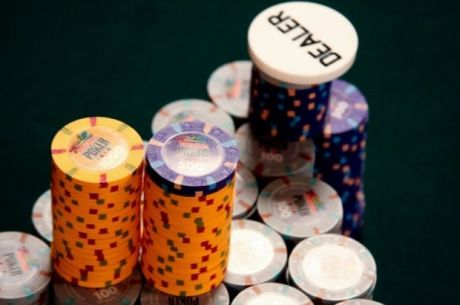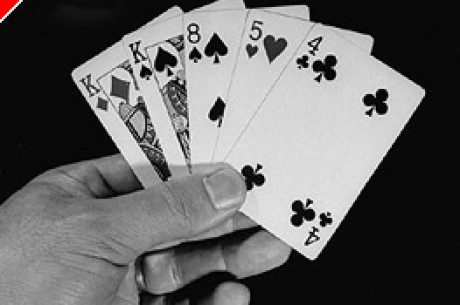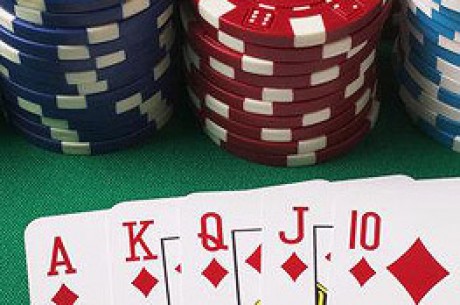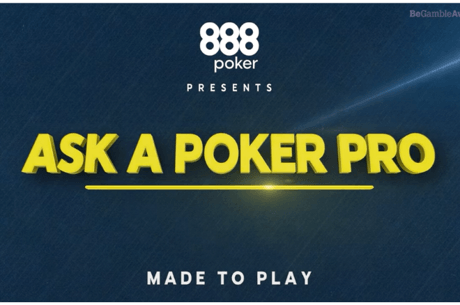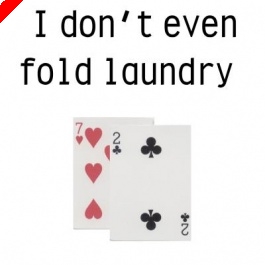Introduction to Omaha - part 15 - Pot Limit - Pre-Flop Decisions
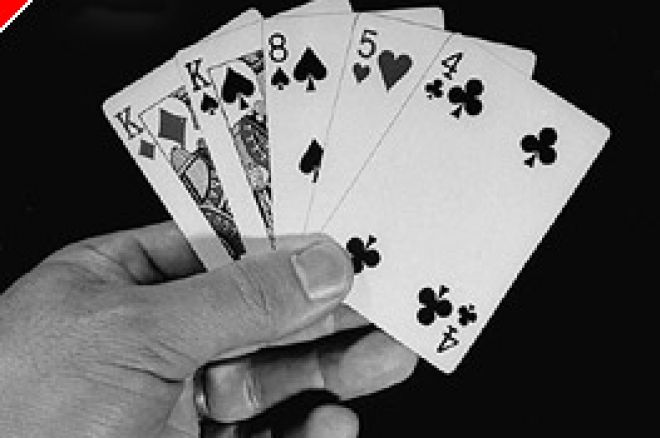
Tony is a regular on-line and card room player living in England. He mostly plays Texas Hold'em and Omaha (High and Split) at fixed, pot and no limit, at both cash and tournament tables.
Introduction
Last week, I covered some basic information about the structure of the pot limit Omaha game that you will find on-line. This week, I will talk a little about playing a game of pot limit Omaha and, more specifically, the pre-flop decisions you are faced with.
Blind Illusions
I am addressing players new to pot limit here so none of this will be rocket science but you should be prepared to make adjustments from your normal limit game.
The first point to address is that, at limit, if you enter a pot playing $0.5/$1 limit stakes, you might lose an average of $2 or $3 each time you fail to pick up a pot, whether that is through poor decision making or sheer bad luck. At pot limit, if you enter a $0.5/$1 game, you are potentially at risk for your entire stack in one hand. Your decision to participate in a pot therefore takes on a magnified significance. Play carelessly and you soon learn to regret it.
So, when you look down the list of available pot limit Omaha games, choose the smallest you can find to start with. You may think it is play money but it is worth staying with it simply to experience and take note of the way a pot can grow from its initial size. Your funds are not greatly at risk that way yet you will get some useful practice so long as you play in a disciplined fashion as regards starting hands.
For player fairness, all pot limit games impose a maximum stake with which a player can join. You will find as you progress that it is often an advantage to be the large stack on a pot limit table so these stake restrictions are a prerequisite for a level start preventing Mr Big turning up and bullying everyone out of their hand. That is not to say you have to go in with the maximum but it is usually the preferred route for a serious player.
The maximum is typically 100 x the big blind. That is why I say you have to be careful about casually joining a $0.5/$1 table. The maximum for each player is $100 and suddenly you find yourself limping in to a hand, someone raises the pot and you are asked to pay $10 to see the flop. Now what do you do? You decide you like your hand enough to call. The flop is some help but a pot raiser makes it $30 to go. You can see how this will end! Choose a small game like 5c/10c or 10c/20c. The maximum loss is $10 and $20 respectively, not forgetting you might have to reload a couple of times!
Pre-Flop Caution
My experience of playing pot limit Omaha on-line at relatively low stakes is that the majority of players like to limp into each hand hoping to see a flop for the cost of the big blind. Occasionally, someone will double the bet. Either move is something you shouldn't make a habit of. It is weak play and does nothing but bleed your bankroll dry in the long term. This is because it is likely that someone will raise on a ten-player table and suddenly your hand doesn't seem so palatable leading to a cheap fold. Sadly, cheap folds add up to expensive leakages over time.
If you have a playable pre-flop hand (playable is a relative term depending on position of course), you should raise by more than the minimum. You needn't come flying out with a pot raise but maybe three or four times the big blind. You do not want to give away clues about your hand so make your raises consistent whether or not you hold a premium hand such as a double-suited pair of aces or a well-connected straight combination. There is always a later round of betting when you can get aggressive with pot-raises.
There will be times when the action gets heated pre-flop. If your standard raise holding As Ac Ks Jc is re-raised for the pot by another player, you will now be looking at a scenario that might involve getting all your chips in the middle. This is where pot limit Omaha comes into its own and you trust to luck. You know you have a mighty hand and are probably favourite on a showdown before the flop. Here, you could call and hope to see a raggedy bunch of lower cards or ideally an ace without connected cards but anything else is likely to put you on a difficult decision at the flop.
Most strong players will re-raise the re-raiser pre-flop. By now all your chips could be in the middle and you have put the onus back on your opponent. Not only do you have the statistical weight of numbers on your side (very few hands will be a favourite against double-suited aces), but you also have the odds of his folding. It could be that the re-raiser wanted to get you off the pot for your initial chips and was banking on a fold or call. He might well fold if he is being asked for around three times his initial re-raise. If not, you still have a sporting chance of doubling up.
Yes, it is now down to luck but that is pot limit Omaha at its most visceral. The more your stack builds, the more you can raise pot against opponents and take them off their hands.
Conclusion
As at limit Omaha, you should be folding most hands pre-flop. Refer to earlier articles about the kinds of starting hands that are good. The same holds true at pot limit Omaha. Good pot limit Omaha players will sit out the majority of pots before the flop but win big when they do have a good hand.
When you do get involved, try to be the pre-flop raiser and keep the raises consistent in size. If you have strong cards, do not be afraid to re-raise the pot and commit your chips before the flop. Aggression counts in pot limit Omaha as an ally to card strength.
The pot raise is a blunt instrument selectively waved above his head by a good player threatening the others with pot decimation should they call. It is not always that simple but the pot raise is a formidable weapon you should make use of at the right time.
It is however usual to see a flop even if the betting has whittled the contestants down to two or three in number. This should tell you that the real action usually happens after the flop, and the big money bets are made then. If you want to be a part of it, you had better make sure you are carrying some heavy ammunition: Not your stack size but your pre-flop cards!
Exorcism
14 July 2005
Ed Note: Great Omaha action always at Pacific Poker

